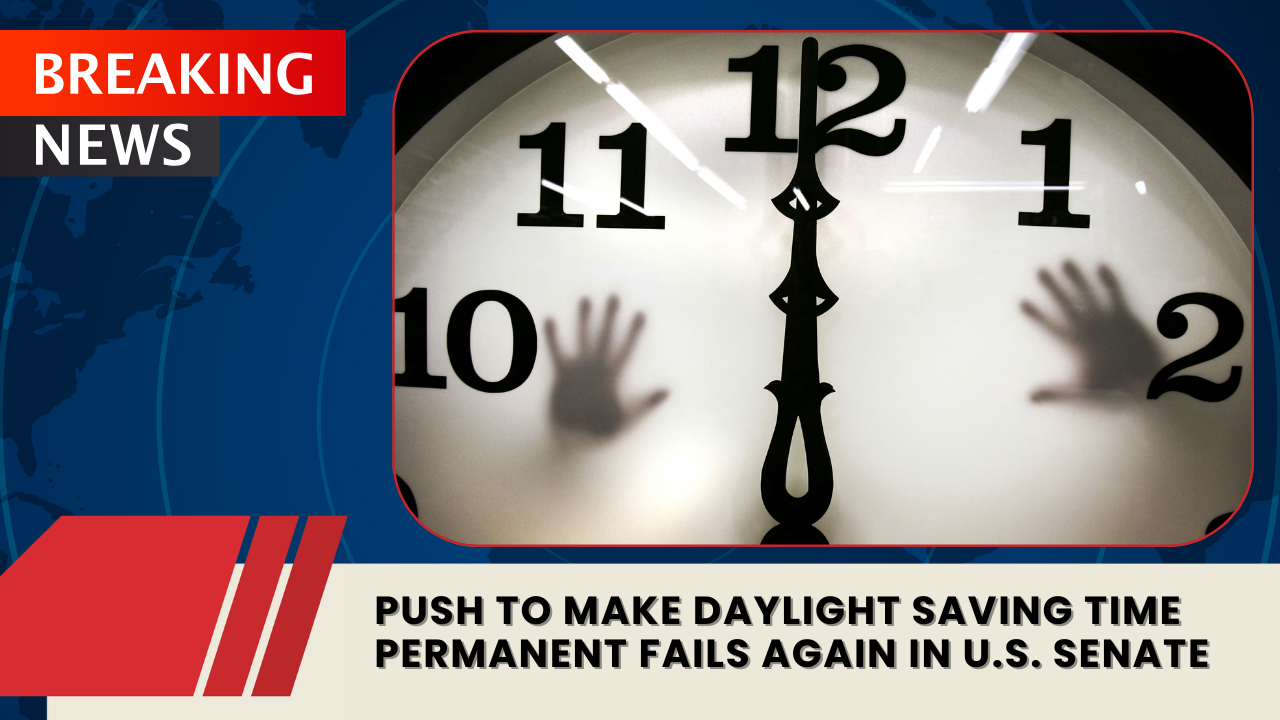WASHINGTON — The ongoing campaign to make daylight saving time (DST) permanent has once again come to a halt after the U.S. Senate failed to reach an agreement this week, leaving Americans to continue adjusting their clocks twice a year.
On Tuesday, October 28, 2025, Senator Rick Scott (R-Fla.) and several colleagues renewed efforts to pass the Sunshine Protection Act, legislation aimed at keeping the nation on daylight saving time year-round. The bill, originally approved unanimously by the Senate in March 2022, was reintroduced earlier this year as S.29 in the 119th Congress but has struggled to gain traction in the House.
Despite growing public support for ending the biannual time change, the proposal once again ran into resistance. Senator Tom Cotton (R-Ark.) opposed the attempt to fast-track the measure, citing safety concerns over darker winter mornings and potential risks for students commuting to school before sunrise.
The brief Senate discussion ended without consensus, effectively stalling the bill for another session.
“There’s broad frustration about switching clocks every spring and fall,” one Senate aide said, “but lawmakers remain divided on whether the country should stay on daylight saving time or standard time permanently.”
The Sunshine Protection Act would make daylight saving time — which provides an extra hour of evening light — the new permanent standard across the United States. States that currently observe permanent standard time, such as Hawaii and most of Arizona, would remain exempt.
Supporters argue that the change would eliminate an outdated practice that disrupts sleep schedules, lowers productivity, and contributes to health issues like heart attacks and strokes. They also claim it could improve evening safety and energy use.
Opponents, however, argue that making daylight saving time permanent would force many Americans, especially in northern states, to start their winter mornings in darkness, increasing commute and school hazards. Several experts also suggest that permanent standard time — not daylight saving time — aligns better with human biological rhythms.
Former President Donald Trump previously expressed support for making DST permanent, calling the practice of changing clocks “pointless.” However, even with bipartisan interest, Congress remains gridlocked.
Currently, the 2025 version of the Sunshine Protection Act remains in the Senate Commerce, Science, and Transportation Committee, awaiting further action. The House of Representatives has yet to take up the measure, leaving the issue unresolved for another year.
As a result, Americans will once again turn their clocks back one hour this weekend as standard time resumes on Sunday, November 2, 2025.
Until Congress can agree on a unified approach, the nation will continue its century-old ritual of “springing forward” and “falling back” — a system many lawmakers and citizens alike say is long overdue for reform.



